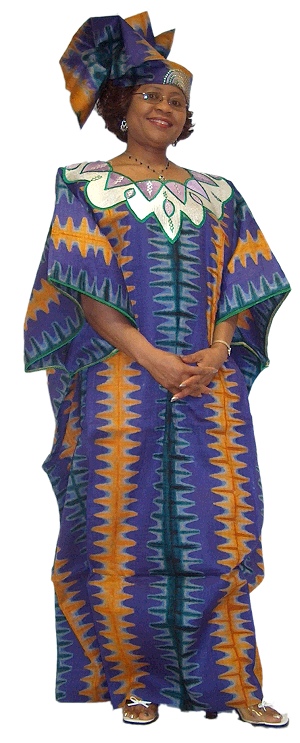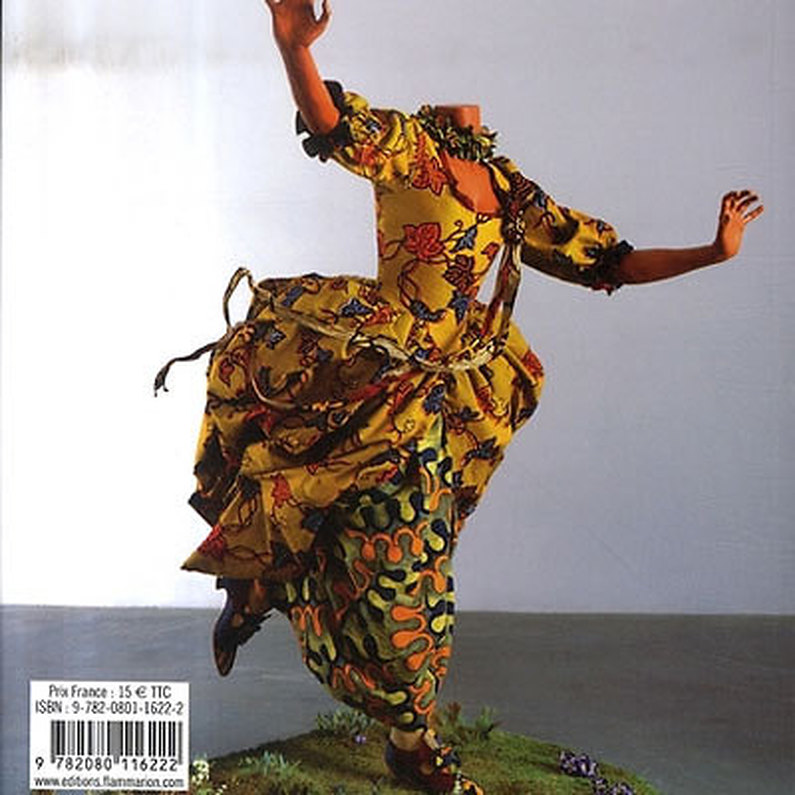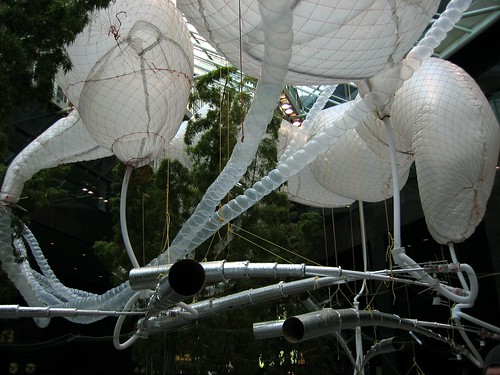As an artist, Yinka seems most known for his work with outfits resembling 18th century garb. This was the colonial period when the slave trade was at its peak. There is a level of ambiguity left to his work as well. While the construction of these costume pieces is very much Colonial the fabrics used are strikingly similar to the bright vibrant patters used in tradition West African garb. Also the outfits are placed upon mannequins which strip the wearers of any ethnic identity. Therefor it is important that Yinka's pieces never been worn by a live model as that person's race would take away from that cultural ambiguity.

With my piece, the presence of two living models was imperative. It actually didn't matter what race the models might be, just as long as there was a male and female. Yinka's work plays off the very absence of a body while simultaneously addressing the race and class issues on a multitude of levels. Both the garb and the fabric comment on the ostentatiousness of both cultures while wreaking with a certain level of irony with the period style of the clothing. Some say "you are the clothes you wear". How does that apply to this work i wonder.
Another artist we were introduced to was Tim Hawkinson. His work also deals with the body but in a much different way than Shonibare. As stated before, Shonibare's work lacks the body and requires its implied presence. Hawkinson's work tends to resemble the body or really...body parts. In almost every piece he has done there is a certain grotesque element of bodily functions. His piece Zoopsia reminds me of organs hanging above our heads and the fact that they emit sound makes me think of gas...(could be that I'm suffering from a horrible case of bloating as I write this)... But another piece of his that I believe was made with some sort of gyrating red ink pen looks disturbingly a lot like intestines. Hawkinson's work fascinates some because of how complex and organic his work appears while often being made from simple inorganic materials.
 A few of his pieces can also be considered transformation pieces but also fall into this category of body art. For example one of his pieces was a feather and an egg made from his own hair. So in a way his work forces the viewer to ponder our mortality, our repulsion by our own bodies when distorted or dissected. The familiar and yet unfamiliar. This is one of the things that both artist share: the tendency to make us reflect on our bodies, what defines them, and how our bodies define us.
A few of his pieces can also be considered transformation pieces but also fall into this category of body art. For example one of his pieces was a feather and an egg made from his own hair. So in a way his work forces the viewer to ponder our mortality, our repulsion by our own bodies when distorted or dissected. The familiar and yet unfamiliar. This is one of the things that both artist share: the tendency to make us reflect on our bodies, what defines them, and how our bodies define us.



No comments:
Post a Comment